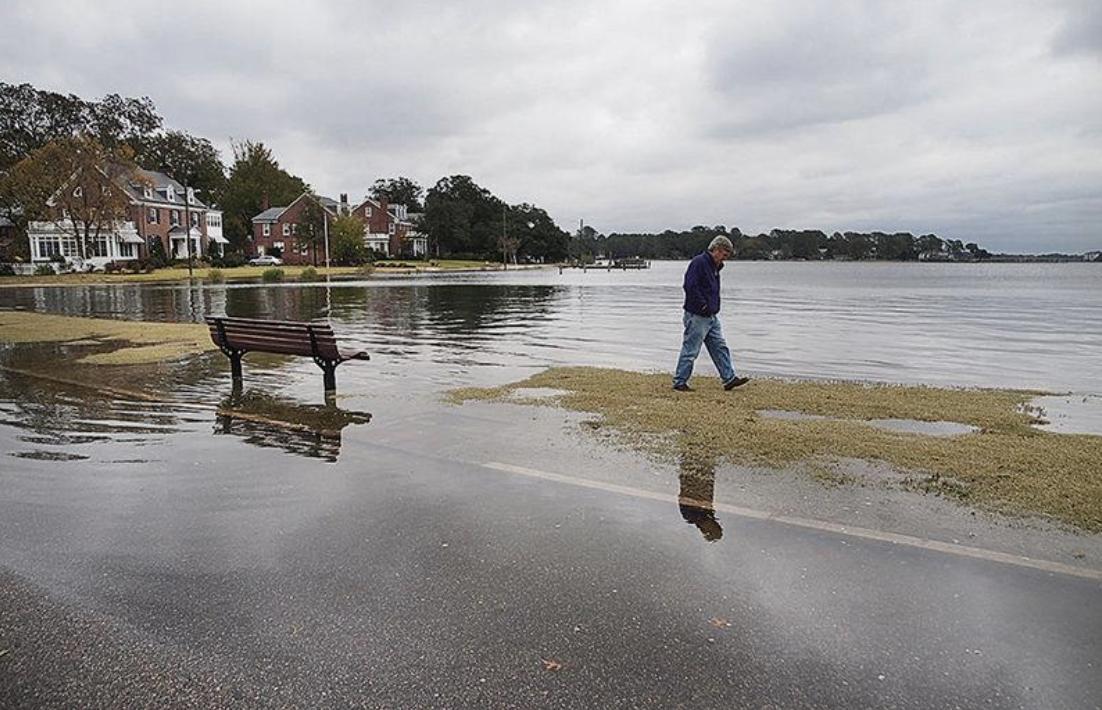Climate change is clearly observable in every region of the planet, and the window is closing for nations to take actions that would stem the most severe future impacts, a global climate assessment concluded in August.
The report, compiled by more than 230 scientists who assessed more than 14,000 studies, cautioned that world leaders are rapidly running out of time to limit global warming to 1.5 degrees Celsius from preindustrial levels.
Many of the changes now observed are unprecedented in thousands, if not hundreds of thousands, of years of climate records, said the latest report from the Intergovernmental Panel on Climate Change, which was created by the United Nations in 1988 and is considered an authority on global climate issues.
Even with quick action, the panel warned, that changes already set in motion — such as sea level rise — are irreversible over hundreds to thousands of years because it takes so long to counter alterations already taking place in the oceans that cover three-quarters of the planet.
Still, the report said that strong and sustained actions to curb emissions of carbon dioxide and other greenhouse gases would limit impacts of climate change, but it could take 20–30 years to see global temperatures stabilize.
“This report is a reality check,” said Valérie Masson-Delmotte, co-chair of the IPCC Working Group that released the report. “We now have a much clearer picture of the past, present and future climate, which is essential for understanding where we are headed, what can be done and how we can prepare.”
The Chesapeake Bay has seen rising water levels and temperatures for decades, and the report says continued rises in sea levels and temperatures are virtually certain for most of North America, including the East Coast.
This means, in all likelihood, that the Bay in coming decades will be unlike the Bay of the past. It will be both higher and warmer than it has been since it was created after the last ice age 10,000 years ago.
Water levels around the Bay have already risen by about a foot during the last century. That’s one of the fastest paces in the nation because the Bay is experiencing the dual effects of rising water and subsiding land.
NASA, using modeling data produced for the report, launched a website predicting future sea level change in different places around the globe. It shows that sea levels near Norfolk could rise between 2 and 5 feet by the end of the century and between a foot and a foot-and-a-half by 2050.
Temperature rises will cause their own problems. Bay water temperatures have risen about 1 degree Celsius in the last 25 years. That has contributed to the loss of eelgrass in the Lower Bay — a critically important underwater habitat that scientists expect to largely disappear from the Bay in coming decades. Scientists also say the rising water temperatures have increased the prevalence of harmful algae blooms.
The Bay’s watershed has about 10% more precipitation on average than it did a century ago, and a 2017 federal climate report said more of that rain was coming during intense storms. The IPCC expects those trends to continue and will lead to an increased frequency of river flooding.
It also expects hurricanes along the East Coast to become more severe. The Chesapeake Executive Council, which includes the administrator of the U.S. Environmental Protection Agency, governors of watershed states, the mayor of the District of Columbia and the chair of the Chesapeake Bay Commission, which represents state legislatures, is expected to adopt a directive later this year affirming that climate change is affecting the Bay and its watershed and that urgent action is warranted.
By Karl Blankenship




Jim Richardson says
As the waters continue to rise and the storms get more intense, we find ourselves caught in a world that can’t accept even the simplest of truths – the concept of wearing masks and getting vaccinated. Who’s going to save us if we won’t save ourselves?